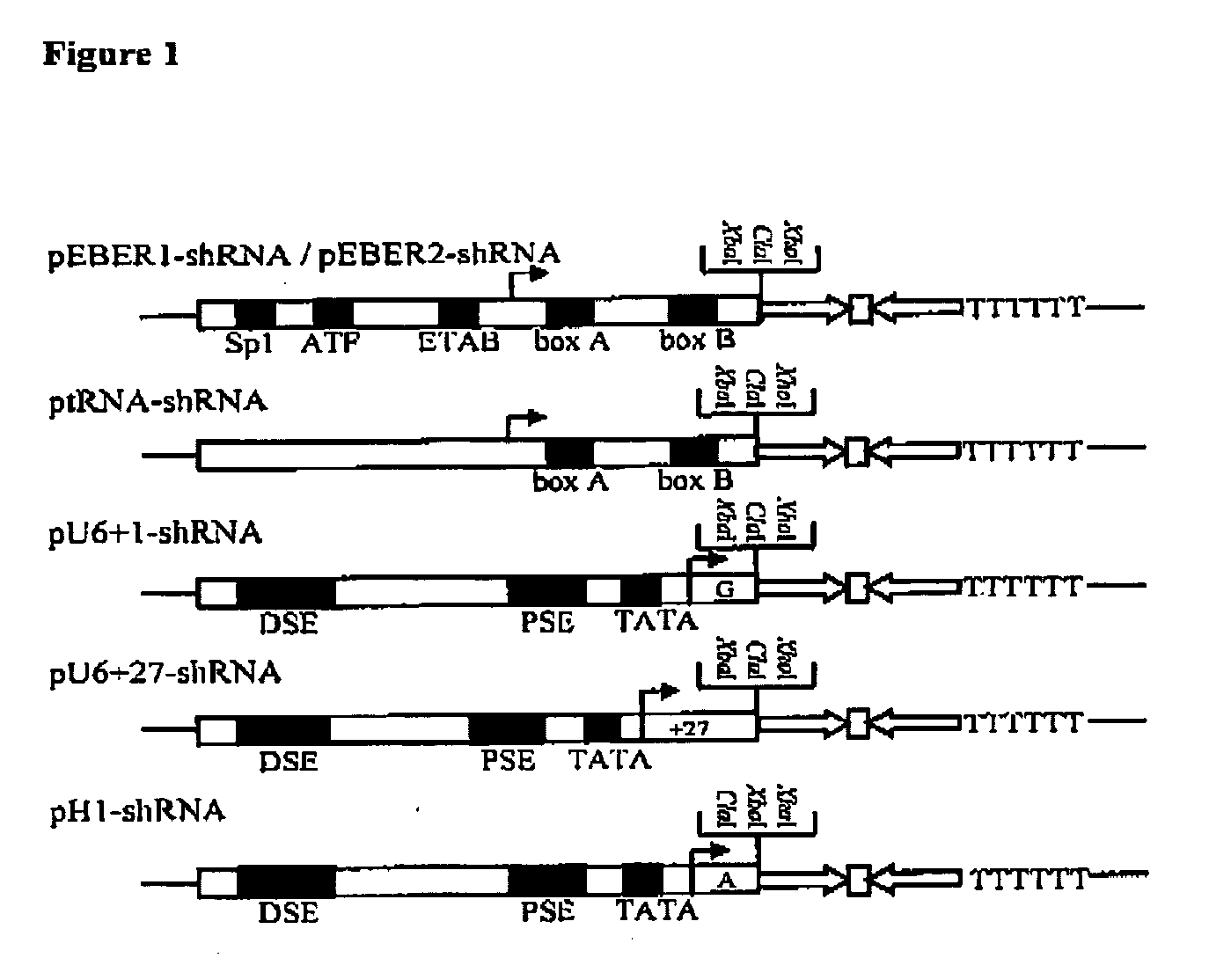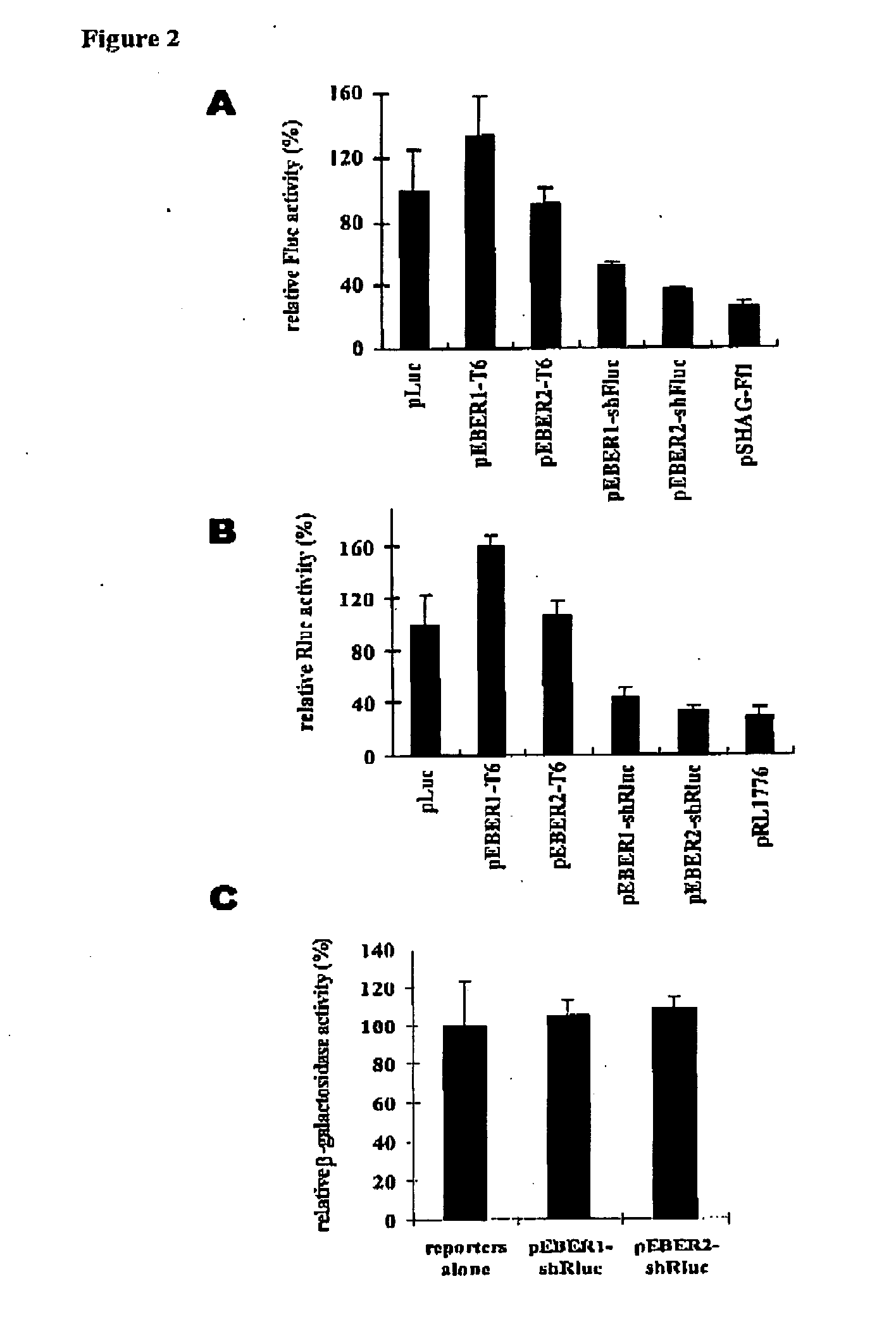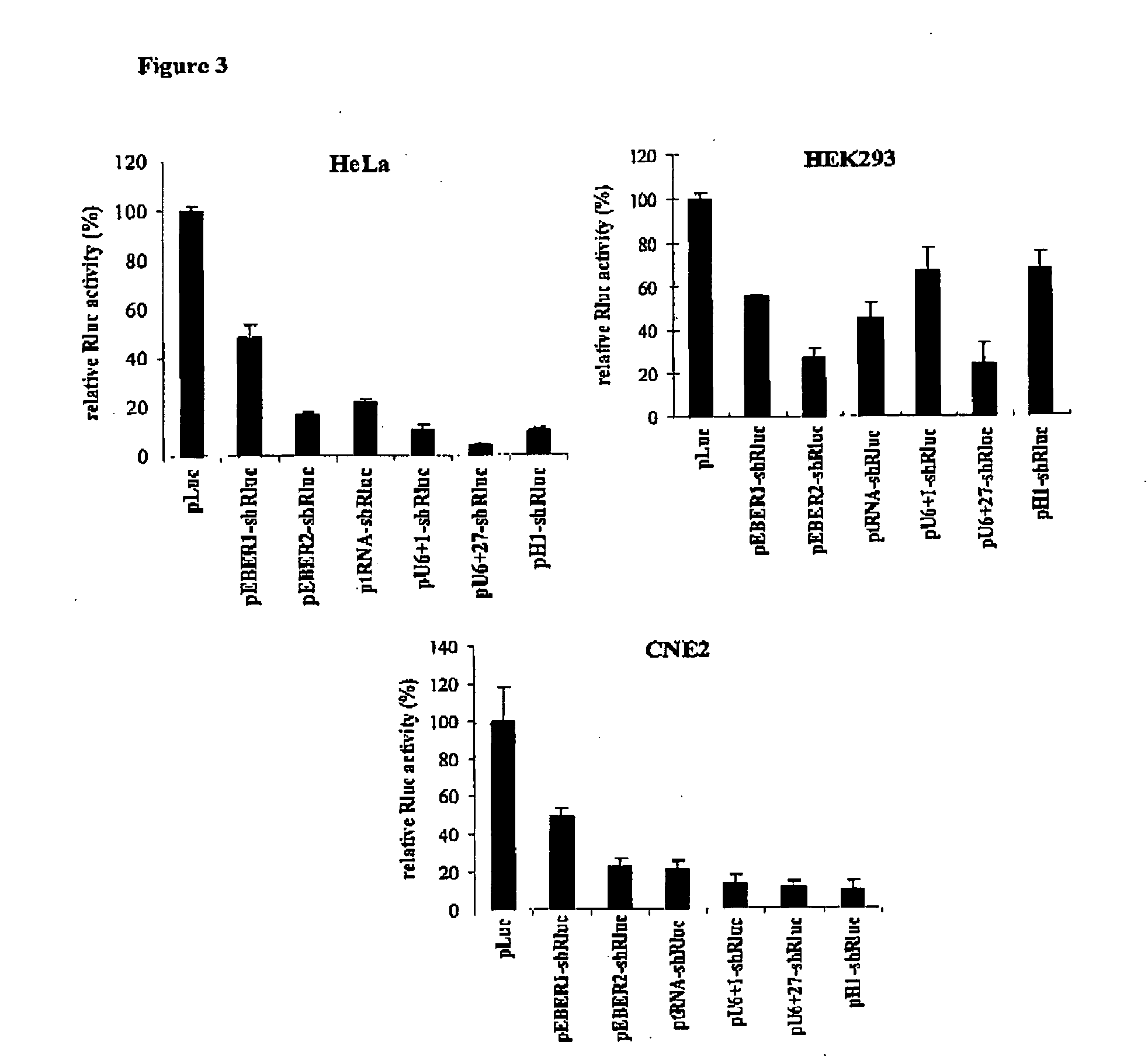Promoters for RNA interference
a technology of promoters and rna, applied in the field of vector systems, can solve problems such as non-specific rna degradation, and achieve the effect of inhibiting the function of a target rna
- Summary
- Abstract
- Description
- Claims
- Application Information
AI Technical Summary
Benefits of technology
Problems solved by technology
Method used
Image
Examples
Embodiment Construction
[0020] RNA interference (RNAi) is an evolutionarily conserved mechanism for post-transcriptional gene silencing, which is mediated by the introduction of double-stranded RNA (dsRNA) triggers (1,2) and leads ultimately to sequence-specific degradation of the homologous mRNA (3,4). This phenomenon was first discovered in Caenorhabditis elegans by injecting long dsRNA (1). However, introduction of dsRNA longer than 30 base pairs into the mammalian cells induces the interferon response, in which the activation of dsRNA-dependent protein kinase (PKR) and 2′,5′-oligoadenylate synthetase (2′,5′-AS) results in non-specific RNA degradation (5-7). To circumvent this pathway, specific gene silencing can be achieved by direct introduction of either chemically synthesized (8) or in vitro transcribed 21-nucleotide long short interfering RNAs (siRNAs) (9,10). Alternatively, short hairpin RNAs (shRNAs) can be expressed from a DNA vector and subsequently processed into functional siRNAs in the cell ...
PUM
| Property | Measurement | Unit |
|---|---|---|
| temperature | aaaaa | aaaaa |
| temperature | aaaaa | aaaaa |
| temperature | aaaaa | aaaaa |
Abstract
Description
Claims
Application Information
 Login to View More
Login to View More - R&D Engineer
- R&D Manager
- IP Professional
- Industry Leading Data Capabilities
- Powerful AI technology
- Patent DNA Extraction
Browse by: Latest US Patents, China's latest patents, Technical Efficacy Thesaurus, Application Domain, Technology Topic, Popular Technical Reports.
© 2024 PatSnap. All rights reserved.Legal|Privacy policy|Modern Slavery Act Transparency Statement|Sitemap|About US| Contact US: help@patsnap.com










